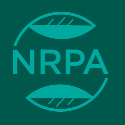
(212) Implementing Environmental Education in Under-Resourced Populations
The goal of environmental education (EE) can be described as, “A positive transformation of an individual’s environmental ethics, environmental knowledge, environmental awareness, environmental attitudes and behavior.” In most current urban EE programs, youth often are taught about ecology as it should be in a perfect world where there are no cities, though those who have visited a city in recent years may have noticed the lack of green space. There is also this thought surrounding green space, that once it is incorporated into a neighborhood, the rich white person will come in and raise the rent. While incorporating EE in the public school system might prove a bit challenging, we can bring EE sessions to the community youth for free with our local community centers or community organizations. This can include using items we already have, as most are familiar with recycling, but also engaging youth through performing and visual arts.
Learning Objectives:
1. After attending this session, attendees should be able to administer fun and engaging environmental activities.
2. After attending this session, attendees should be able to express understanding when teaching environmental education topics.
3. After attending this session, attendees should be able to acknowledge socioeconomic status when teaching about the environment.


Engage With Us